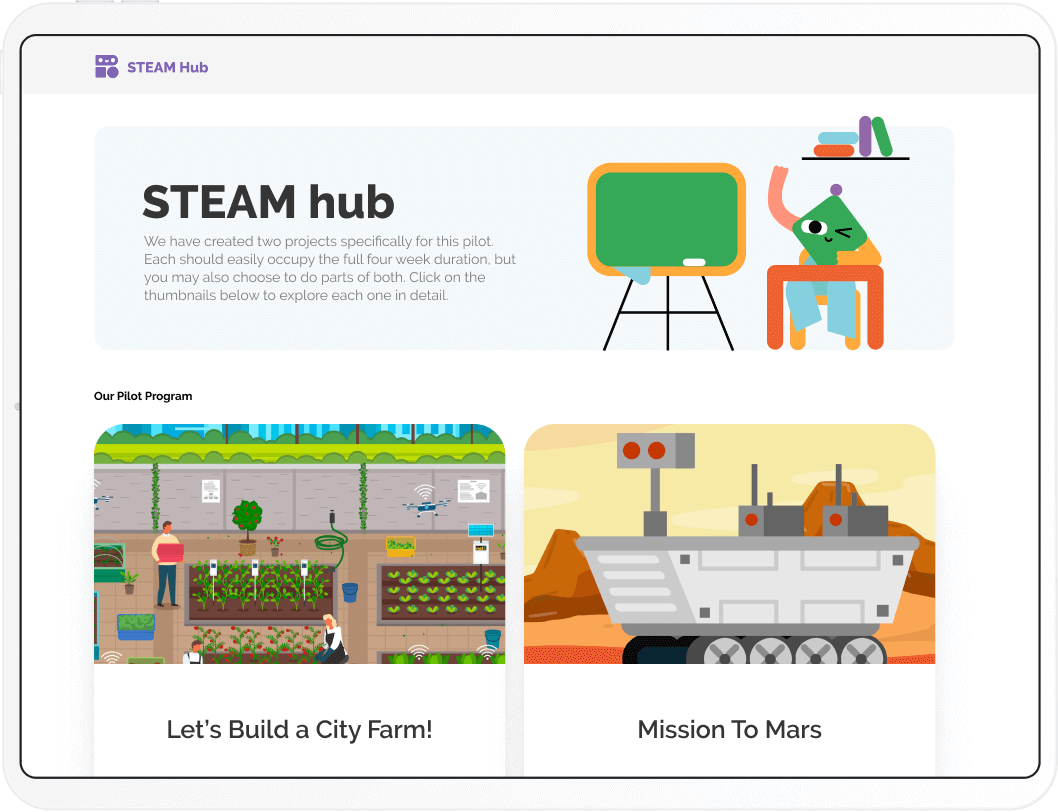
Design thinking: how to raise the next generation of Steve Jobs’
.png)
The secret of a perfect solution lies in a profound understanding of what people need. This is what we try to teach with our curriculum.
Have you ever wondered why people respond so well to a solution, even though it might not be the objectively best one of its kind on the market? Well, it may not be the best in the world, but it may just be exactly what people crave for. And an even more interesting of a question might be: how do I come up with something like that? How do I provide solutions in a way that people love?
By learning to solve problems effectively.

The engineering design process might sound very ambiguous, but it’s actually pretty simple: a solution-based, human-centered approach to solving problems, especially those that are unfamiliar. It asks – what do people want, what do they need? How do we best approach their demands? Despite its name, the method does not apply exclusively to designers and artists, but to anyone – be it an engineer, businessman, strategist, or a stay-at-home parent.
We (and many others) think it should be taught from a young age because it carries many benefits. That is why it is a crucial part of our curriculum. Besides teaching children to carefully consider the best solution to an existing problem, it also teaches them to prevail.Rather than avoiding an issue, they are lead to face it head-on. Instead of reacting impulsively, they are taught to evaluate their choices and reflect on them before they act. In such, this method prepares them for life’s complexity and challenges, reminding them to persist until they reach their goal.

Here are our 8 steps of the engineering design thinking process:
- Identify a reason: what is the problem or idea?
Before starting a lesson, we ask: why do we need this Robo project? What is the problem that we are trying to solve? Reframe it, say it out loud, understand it. In design thinking, this step helps us understand the problem we are trying to solve from several perspectives. It includes talking to people, observing situations, or immersing yourself in the environment that you are trying to understand. At the end of it, you should gain a complex understanding of the situation and its circumstances. What exactly do people want? Why?
2. Brainstorm the solutions
Next, you analyze what you just observed and come up with possible solutions. They don’t need to be good just yet, because we are not evaluating them.
3. Evaluate and pick one: What would happen if…?
What are the pros and cons of each method? Choose the best one.
4. Sketch and plan: What will I need?
Once you have the idea of a solution, you need to figure out what you need to test it. It’s best to have a few possible solutions at hand and to then compare their effectiveness.
5. Work on a solution: Build and program, test, repeat!
Once you have your preferred method of solution, you test it with your product, repeatedly. Very often, this will not succeed with your first try. That’s okay! It’s important not to lose motivation. Not every problem is easy to solve.
6. Finalize: Is everything ready?
Once we have the ideal solution, we need to see if we can present it. Is everything set?
7. Present the solution
Show your solution. Ask for feedback. It’s crucial for your reflection and future improvements.
8. Evaluate: How was it?
Reflect on what worked, what didn’t, and what to do better next time.
With this method, we not only look for good solutions, but for those that will be appreciated. Functionality and delightfulness. So, who knows, the kids we teach today might later be inspired to create the kind of great solutions and products that millions of people will be eager to use. All they need is a good toolkit to solving problems.
If this concept piqued your interest, check out our curriculum to see the different ways in which we implement the engineering design process in practice.
“
Love What You’re Reading?
Subscribe to our newsletter to get more just like it, sent straight to your inbox.
Gefällt Dir, was du liest?
Melde dich für unseren Newsletter an, um weitere Informationen direkt in deinem Posteingang zu erhalten.














.png)
%20(1).png)

